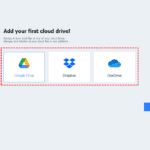
Photo by Caspar Camille Rubin on Unsplash
Nowadays, it seems that artificial intelligence has permeated every industry and sector in the world, while cloud computing continues to bring higher implementation efficiency and lower operational costs for companies. It doesn’t matter anymore if you’re running a global Ecommerce business or a local brick-and-mortar store — AI solutions and cloud computing can minimize costs and improve business results in every department and team.
The problem is that cloud computing comes with many features and IT applications, and there are many AI solutions out there, making proper implementation and cost management a chore. Simply put, you might not know which technology to invest in or how much to invest to get the results you want without breaking the bank.
That’s why today we’re taking a look at the five simple implementation strategies you can use to bring AI and cloud computing into your business and modernize your operation.
Understand Your Needs and Priorities
It all starts with a needs assessment and the practical applications of AI-driven and cloud-based solutions for your business. This process means that the first step towards successful cloud and AI implementation is an audit of your processes and IT requirements.
Keep in mind that nowadays there’s an AI-driven tool or featureset for almost any process, so without a clear overview of your needs and priorities you might find yourself overinvesting.
If you are running a remote workplace, for example, you need a cloud-based environment and a unified platform. Before you invest in the big names out there, you can research an Amazon WorkSpaces alternative or an alternative to Microsoft Teams and other popular cloud solutions to find a cloud system that makes financial sense to you.
The same goes for any needs assessment, especially when you’re researching AI solutions and which teams in your organization need them the most.
Develop a Clear Strategy
Implementing AI solutions or transitioning from an on-site to a fully cloud-based operation takes time and careful strategizing. Depending on the nature of the business, the number of processes that rely on these technologies, and the industry you’re in, implementing these technologies could take some time.
Typically, you’ll want to outsource the implementation to a dedicated team if you’re not equipped internally to integrate AI-driven solutions. Likewise, you’ll need to let the cloud provider handle your on-premises to cloud migration to ensure business continuity, compliance, and data security.
Whether you’re implementing AI tools or migrating to the cloud, your implementation strategy needs to address the problems of integrating new features and solutions and how these features will interact with your existing technology.
Leverage Existing Data
Implementing both AI solutions and cloud-based systems relies heavily on having reliable data to feed into these systems. In other words, any AI system you integrate will need an influx of relevant external and internal data to optimize it for your needs and specific use case.
The same goes with cloud computing, so it’s important to leverage your data from your CRM, your various analytics tools, and your IT analytics to empower your new cloud-based infrastructure. It’s also a good idea to leverage cloud monitoring tools to generate actionable reports and insights to continuously optimize your processes and AI tools.
Invest in Training and Education
Employee education is one of the most important elements of successful AI and cloud implementation in any business. This education is especially relevant for companies that handle sensitive user and customer information, meaning that the employees need to know how to use these new technologies and ensure data security across the board.
Taking an Ecommerce business as an example, transitioning to a cloud environment while retaining PCI compliance for national and international transactions demands proper training with proper policy implementation. Make sure that all teams handling sensitive customer data receive training on how to use the technology, as well as education on best practices for data management, privacy, and security.
Collaborate with Experts
Finally, if you don’t have the specialized staff you need to carry out these changes in your organization, make sure to bring in experts, consultants, or vendors who have experience implementing these technologies in businesses in your industry.
These experts will provide valuable insights and guidance on best practices, potential challenges, and other considerations that can help ensure a successful implementation. Most importantly, they’ll do the heavy lifting for you and take care of data migration, AI implementation, employee training, and even policy and compliance.
Over to You
If you’re looking to modernize your operation with some AI-driven solutions and a cloud-first approach, now’s the time to start. These technologies are reshaping the modern business world and will allow you to optimize, automate, and transform numerous customer-facing and internal processes in your organization.
Be sure to follow these steps to create a cost-effective action plan and invest only in the solutions, features, and technologies that will take your business to the next level in 2023.








